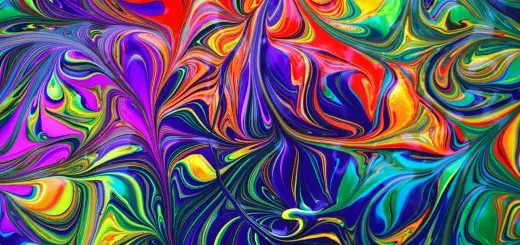Yin and Yang in Traditional Chinese Culture: Unity in Diversity

Looking for more amazing products? Check out our online store and explore our collection here! Happy shopping!
Before diving in, please note: This post is for informational purposes only. If you’d like to know more about how we approach topics, feel free to check out our friendly Disclaimer Page.
Hey there, amazing readers! 
We’re committed to delivering quality posts, and your support (even just sticking around despite the ads) means everything to us. So, bear with us, and thanks for helping us keep the good vibes rolling. Now, on to the fun stuff!
TRANSLATE BUTTON AT THE END OF THE ARTICLE
A Quick Overview
Yin and Yang are fundamental concepts in traditional Chinese culture that represent the dualistic nature of the universe.
The concept of Yin and Yang is based on the idea that everything in the world is interconnected and interdependent, with opposing forces complementing each other to create harmony and balance.
This ancient philosophy permeates various aspects of Chinese life, from art and medicine to philosophy and religion.
Let’s delve deeper into the concept of Yin and Yang and its significance in traditional Chinese culture.
Exploring the Concept of Yin and Yang
In traditional Chinese philosophy, Yin and Yang are two opposing yet complementary forces that are present in all aspects of life.
Yin represents darkness, femininity, passivity, and coldness, while Yang symbolizes light, masculinity, activity, and warmth.
The interplay between Yin and Yang creates a dynamic equilibrium that is essential for the balance and harmony of the universe.
This concept of duality emphasizes the interconnectedness of all things and the need for balance in order to achieve harmony.
Origins of Yin and Yang in Chinese Culture
The concept of Yin and Yang can be traced back to ancient Chinese cosmology and philosophy.
It is believed to have originated in the Zhou Dynasty (1046-256 BCE) and was further developed by Taoist and Confucian scholars.
The symbol of Yin and Yang, known as the Taijitu, is a circular symbol divided into two halves—one black (Yin) and one white (Yang)—with a small dot of the opposite color in each half, symbolizing the interdependence of the two forces.
The Interconnectedness of Yin and Yang
Yin and Yang are not static or fixed entities but are constantly changing and evolving in relation to each other.
They are interconnected and interdependent, with each force containing the seed of its opposite within it.
This dynamic relationship reflects the cyclical nature of life and the constant flux of the universe.
The concept of Yin and Yang emphasizes the idea that balance is achieved through the harmonious interaction of opposing forces.
Symbolism of Yin and Yang in Traditional Chinese Art
In traditional Chinese art, the symbol of Yin and Yang is often depicted in various forms, such as paintings, calligraphy, and ceramics.
The Taijitu symbol is commonly used to represent the dualistic nature of the universe and the harmony of opposites.
The circular shape of the symbol signifies the cyclical nature of life, while the black and white halves symbolize the interplay between Yin and Yang.
Yin and Yang in Traditional Chinese Medicine
In traditional Chinese medicine, the concept of Yin and Yang is used to diagnose and treat illness.
Health is believed to be maintained through the balance of Yin and Yang within the body.
Imbalances in these forces are thought to manifest as disease, and treatment aims to restore harmony and equilibrium.
Acupuncture, herbal medicine, and Qi Gong are some of the practices used in traditional Chinese medicine to rebalance Yin and Yang.
Balancing Yin and Yang in Feng Shui
Feng Shui, the ancient Chinese practice of harmonizing the energy flow in one’s environment, also incorporates the concept of Yin and Yang.
Balancing Yin and Yang energies in the home or workplace is believed to promote health, prosperity, and overall well-being.
By arranging furniture, colors, and materials in a way that creates harmony between Yin and Yang forces, Feng Shui practitioners aim to create a harmonious and balanced living space.
Yin and Yang in Traditional Chinese Philosophy
In traditional Chinese philosophy, Yin and Yang are central to the concept of Taoism and Confucianism.
Taoism emphasizes the need to align oneself with the natural rhythms of the universe and to embrace the dualistic nature of Yin and Yang.
Confucianism, on the other hand, focuses on the importance of social harmony and ethical behavior, which are believed to be rooted in the balance of Yin and Yang forces within oneself.
The Role of Yin and Yang in Traditional Chinese Religion
In traditional Chinese religion, such as Taoism and Buddhism, Yin and Yang are seen as fundamental aspects of the cosmic order.
These forces are personified in deities and mythical figures, such as the Taoist deities of Yin and Yang or the Buddhist concept of the interdependence of samsara and nirvana.
By recognizing the interconnectedness of Yin and Yang, practitioners seek to achieve spiritual enlightenment and transcendence.
Yin and Yang in Traditional Chinese Martial Arts
Traditional Chinese martial arts, such as Tai Chi and Kung Fu, also incorporate the principles of Yin and Yang.
Movements in these martial arts are based on the balance of soft (Yin) and hard (Yang) techniques, with practitioners aiming to achieve harmony and fluidity in their movements.
By embodying the concept of Yin and Yang in their practice, martial artists seek to cultivate physical strength, mental agility, and spiritual balance.
Yin and Yang in Traditional Chinese Cuisine
In traditional Chinese cuisine, the concept of Yin and Yang extends to the balance of flavors, textures, and ingredients in a dish.
For example, a typical Chinese meal will include a combination of Yin foods, such as vegetables and fruits, and Yang foods, such as meats and spices.
The balance of Yin and Yang in food is believed to promote digestion, energy, and overall health.
By incorporating a variety of ingredients that represent different Yin and Yang qualities, Chinese chefs aim to create a harmonious and balanced meal.
Yin and Yang in Traditional Chinese Fashion
Traditional Chinese fashion also incorporates the concept of Yin and Yang in its design and aesthetics.
Traditional Chinese clothing, such as the qipao or hanfu, often features contrasting colors, textures, and patterns that symbolize the balance of Yin and Yang forces.
The interplay of light and dark, soft and hard, and feminine and masculine elements in traditional Chinese fashion reflects the harmonious relationship between opposing forces.
Yin and Yang in Traditional Chinese Festivals
In traditional Chinese festivals, the concept of Yin and Yang is celebrated through various rituals and customs.
For example, during the Chinese New Year, people wear red clothing and decorate their homes with red lanterns to symbolize the Yang energy of prosperity and good fortune.
On the other hand, during the Mid-Autumn Festival, people eat mooncakes and admire the full moon to honor the Yin energy of harmony and unity.
These festivals highlight the importance of balance and harmony in traditional Chinese culture.
Conclusion
Yin and Yang are not just abstract concepts in traditional Chinese culture; they are fundamental principles that underpin various aspects of life, from art and medicine to philosophy and religion.
The concept of Yin and Yang emphasizes the interconnectedness of all things and the need for balance and harmony to achieve well-being and prosperity.
By understanding and embracing the duality of Yin and Yang, we can cultivate a deeper appreciation for the complexities of the universe and strive for unity in diversity.

The Enlightenment Journey is a remarkable collection of writings authored by a distinguished group of experts in the fields of spirituality, new age, and esoteric knowledge.
This anthology features a diverse assembly of well-experienced authors who bring their profound insights and credible perspectives to the forefront.
Each contributor possesses a wealth of knowledge and wisdom, making them authorities in their respective domains.
Together, they offer readers a transformative journey into the realms of spiritual growth, self-discovery, and esoteric enlightenment.
The Enlightenment Journey is a testament to the collective expertise of these luminaries, providing readers with a rich tapestry of ideas and information to illuminate their spiritual path.
Our Diverse Expertise
While our primary focus is on spirituality and esotericism, we are equally passionate about exploring a wide range of other topics and niches 

To ensure we provide the most accurate and valuable insights, we collaborate with trusted experts in their respective domains 
Our blog originally focused on spirituality and metaphysics, but we’ve since expanded to cover a wide range of niches. Don’t worry—we continue to publish a lot of articles on spirituality! Frequently visit our blog to explore our diverse content and stay tuned for more insightful reads.
Hey there, amazing reader! 
Check out our store here and take a peek at some of our featured products below! Thanks for being awesome!










